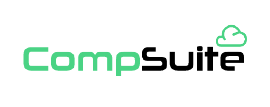The “Great Resignation” period of workers rapidly switching jobs may largely be over, but there still is plenty of demand for recruiters who can help businesses fill open positions. There were more than 10 million job openings unfilled as of the end of August, according to the U.S. If it once seemed otherwise, that was just a fantasy—one brought on by the psychedelic freedoms (and heavy burdens) of the pandemic. Given a taste of greater freedom, one might easily conclude that office work had changed, or that it was sure to do so. But if you’d been chained to the office before the pandemic, you’re no less captive to it now—even though, in certain comfy moments, you could let yourself forget it.
A new survey of American CEOs found that only six of 158 said they will prioritize bringing workers back to the office full-time in 2024. Another survey from Deloitte in November found 65% of chief financial officers surveyed said they will keep hybrid policies in place this year. What does the modern hybrid workplace environment look like today? It really depends on your organization and what you are doing there.
Replicate your work office’s setup at home.
As companies recognize what is possible, they are embracing a once-in-a-lifetime opportunity to reset work using a hybrid model. Hybrid work redefines what it means to work and collaborate in a more distributed yet more connected world. This shift challenges us to rethink the experiences employees need to remain productive and easily collaborate wherever they are.
Learn more about how Webex is solving the challenges of hybrid work. As work has expanded beyond the walls of the office, keeping the culture intact requires a shift in the way we think about shared purpose. Colleagues need to work together and build connections, whether they are in a room together or virtual, and your collaboration solution needs to facilitate interactions that would occur if people were together in-person. A key pillar of hybrid work is the shift from focusing on location and hours worked to the outcomes that are delivered.
Enter the era of hybrid work
Hybrid work is a flexible approach that combines working in an office environment and working from home. Hybrid work varies in flexibility and supports a variety of different work schedules. hybrid work from home It allows employees to choose how and where they work, and offers autonomy to employees to design their working week in a way that works both for them and with company policies.
A hybrid model can seem like an easy solution to the current problems companies face because they get to keep their office space while also accommodating both those who prefer in-person and those who prefer remote work. As with most things, however, the easiest solution isn’t always the best. The hybrid model may seem like an easy solution, but it’s not without hurdles that must be overcome. Maybe they don’t want to lose money on unused office space, or they still aren’t sold on remote work. These businesses may set up a hybrid model that can be described as office-occasional. The COVID-19 pandemic showed us that remote work is possible—and sometimes even preferable.
Company-wide policy
It may take more effort to check in with someone remote than the person sitting at the desk opposite you, but it must be done. Also make sure that work is distributed fairly, so that remote workers don’t end up getting the rubbish tasks or assignments that the on-site workers didn’t want. It’s well known that there’s a behavioral bias towards people who are more often in the office, and therefore visible and influential, over remote workers who are ‘out of sight, out of mind’.
- With one of these tools, you can store documents in the cloud to easily access and share from anywhere.
- Even sectors such as HR and recruiting and customer service, traditionally reliant on physical offices, are experiencing the benefits of remote work.
- What’s more, 56% of those companies are allowing employees to choose when and how often they wish to come into the office.
- Employees who aren’t in every day miss out somewhat on the corporate culture and real-time contribution to decisions and actions.
- One of the other pitfalls of the hybrid model is that it’s more likely to make remote workers into second-class citizens.
Social distancing, proof of vaccination, mask requirements, and limiting how many people are in the building may be enforced to ensure safety. The same applies to companies that have adopted fully remote arrangements, like Atlassian. Without clear guidelines in place, conflict https://remotemode.net/ can easily arise. Although more companies have introduced stricter in-office requirements for employees, office occupancy remained relatively unchanged between 2022 and 2023. But I can’t think of another time when the workplace has changed fundamentally overnight.
